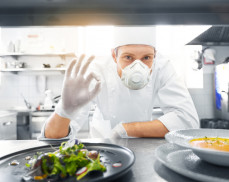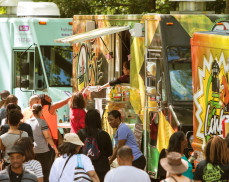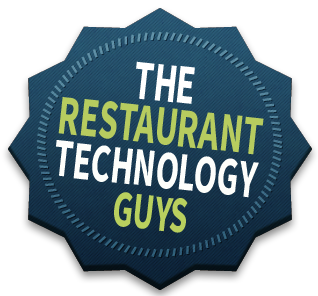
In an age where digital technology has become deeply intertwined with the restaurant industry, safeguarding customer data is paramount. The increasing use of digital payment methods, online reservations, and customer databases has elevated the importance of restaurant data security. Let’s delve into the challenges and best practices for protecting customer information, including payment card data, while providing a seamless and secure dining experience.
Like many others, the restaurant industry has witnessed a significant shift towards digitalization. This shift has introduced numerous benefits, such as streamlined reservations, quicker payments, and improved customer service. However, it has also brought forth new challenges, the most prominent of which is data security.
Customer data, especially payment card information, is a lucrative target for cybercriminals. Ensuring the security of this data is not only a legal requirement but also a matter of trust. Customers must feel confident that their information is safe when dining at a restaurant.
Several challenges are specific to maintaining data security in a restaurant setting:
Point of Sale (POS) systems are at the heart of restaurant operations. These systems can be vulnerable to security breaches if not properly protected.
The human factor plays a significant role in data security. Properly training employees in data protection practices is essential.
Restaurants must adhere to industry standards and government regulations, such as the Payment Card Industry Data Security Standard (PCI DSS), which sets guidelines for securing payment data.
To ensure data security in a restaurant setting, consider the following best practices:
Use encryption for data both in transit and at rest. This ensures that sensitive information is scrambled and unreadable to unauthorized individuals.
Keep all software, including your POS system, up-to-date to patch vulnerabilities and protect against emerging threats.
Educate your staff on data security best practices, including recognizing phishing attempts and understanding the importance of strong passwords.
Limit access to sensitive customer data to authorized personnel only. Implement strong authentication methods to ensure data is accessed by the right individuals.
Conduct regular security audits and penetration testing to identify vulnerabilities in your systems and rectify them promptly.
Have a well-defined incident response plan in place to address data breaches promptly, minimizing damage and ensuring legal compliance.
Data security in the restaurant industry is of utmost importance. Protecting customer information, especially payment data, is a legal requirement and a way to build trust and loyalty among diners. By implementing best practices such as encryption, employee training, and regular security audits, restaurants can provide a secure and seamless dining experience while protecting their customers’ sensitive data.

In the ever-evolving restaurant industry landscape, staying at the forefront of technological advancements can be the key to success. Once a futuristic concept, voice technology in restaurant operations is rapidly becoming an integral component. From streamlining kitchen tasks to enhancing customer interactions, voice-activated systems revolutionize how restaurants function.
Voice-activated systems, like voice assistants and voice ordering platforms, have entered the heart of restaurant operations. Here are some of the key ways in which they are transforming the industry:
In a fast-paced restaurant kitchen, time is of the essence. Voice technology simplifies tasks by allowing chefs and kitchen staff to communicate seamlessly. They can verbally request supplies, check on orders, and receive important information without leaving their workstations. This results in smoother workflows, reduced wait times, and improved order accuracy.
Voice-activated systems are also making their mark in the front-of-house operations. Many restaurants are adopting voice ordering and reservation systems, allowing customers to interact with the establishment via voice commands. This not only offers convenience but also provides a unique and engaging dining experience. Voice-activated systems can suggest menu items, take orders, and even facilitate bill payments.
Voice technology in restaurant operations is a boon for accessibility. It enables visually impaired customers to navigate menus and place orders independently. This inclusivity ensures that all customers can enjoy a seamless dining experience.
While integrating voice technology in restaurant operations offers numerous benefits, it also comes with its fair share of challenges. These include:
With voice-activated systems collecting and processing customer data, data security becomes paramount. Restaurants must ensure that sensitive information, such as payment details, remains protected from potential breaches.
Training staff and seamlessly integrating voice technology into existing operations can be complex. Restaurants must invest in staff training to make the most of these systems, which can also help with recruiting, hiring and retaining employees.
Customer acceptance of voice-activated systems varies. While some diners appreciate the convenience and novelty, others may prefer traditional methods. Striking a balance and offering customers a choice is essential.
The role of voice technology in restaurant operations is expected to grow. As these systems become more sophisticated and widely accepted, we can anticipate:
In conclusion, voice technology is no longer a distant dream but a reality in the restaurant industry. Its power to streamline kitchen operations, enhance customer interactions, and improve accessibility is revolutionizing restaurant operations. While challenges exist, the potential for growth and advancement in this field is promising. As restaurants continue to embrace this technology, they will offer more seamless and engaging dining experiences for their customers.
Learn how branded phone calls can increase guest satisfaction and get you in touch with your customers faster and easier in the restaurant world. Check out the team at First Orion Branded Communication & Call Protection Solutions (firstorion.com)
For a full transcript of the show click here 198. First Orion Transcript

Food safety in restaurants is a top priority in the industry, and emerging technologies like blockchain are stepping up to the plate to ensure the integrity of the food supply chain. In this blog post, we’ll explore how blockchain technology revolutionizes food safety in restaurants.
Foodborne illnesses and contamination incidents are major concerns for both consumers and the restaurant industry. Trust and transparency in the food supply chain are essential. This is where blockchain, with its inherent features of transparency and traceability, comes into play.
Blockchain creates a decentralized and immutable ledger of transactions. Each step in the food supply chain, from farm to fork, is recorded as a “block” of data. This includes information about the origin of ingredients, processing methods, and transportation details. Once recorded, this data cannot be altered without all parties’ consensus.
In a food safety issue, blockchain technology allows for swift traceability. Within seconds, authorities can identify the source of contamination and track where affected products have been distributed. This enables targeted recalls, reducing waste and protecting consumers.
Blockchain also fosters trust between restaurants and consumers. Diners increasingly want to know where their food comes from, and blockchain provides a transparent view of the entire supply chain. By scanning a QR code, customers can access information about the ingredients’ origin, processing, and safety in their meals.
Counterfeit or mislabeled food products can pose serious health risks. Blockchain’s immutable records make it exceptionally difficult for fraudulent products to enter the supply chain undetected. This protects both consumers and restaurants from potentially harmful fakes.
Blockchain can streamline compliance with food safety regulations. Automated smart contracts can trigger alerts and actions if specific conditions are not met, ensuring that restaurants adhere to safety standards consistently.
Blockchain is poised to become a cornerstone of food safety in the restaurant industry. Its ability to provide transparency, traceability, and swift response to contamination incidents is revolutionizing how restaurants manage food safety. As diners become more conscious of their food, blockchain ensures that restaurants can meet the demand for trust and accountability in the food supply chain.
In this episode, the Restaurant Technology Guys interview Ben Brown of Converse Now, a company that provides voice AI solutions for restaurants. Ben shares how voice AI can help restaurants automate their ordering process, reduce errors, increase sales, and enhance customer satisfaction. He also talks about the challenges and opportunities of implementing voice AI in restaurants, and how Converse Now can help you get started. If you are interested in learning more about voice AI and how it can benefit your restaurant, you don’t want to miss this episode. Listen to the podcast now and discover how voice AI is helping restaurants be more efficient. Check them out at Home – ConverseNow
For a Full Transcript Click here 197. ConverseNow.AI Transcript

Once associated with quick curbside bites, food trucks have undergone a technological transformation that’s reshaping the culinary landscape. Beyond serving delicious dishes, food truck owners leverage technology to optimize their operations, enhance customer experiences, and explore new frontiers. In this blog post, we’ll take a closer look at the tech-driven evolution of food trucks.
Food trucks have embraced the digital age with open arms. Mobile apps and social media platforms have become essential tools for these culinary entrepreneurs. Through apps and social media, customers can easily locate their favorite food trucks, check daily specials, and even place orders in advance. Real-time updates on social platforms keep customers informed about locations, menus, and events.
Traditionally, food trucks relied on cash transactions or basic card processing. Today, many food trucks have adopted mobile point-of-sale (mPOS) systems. These compact, easy-to-use devices enable secure and efficient card payments. They also provide invaluable sales data and analytics that help food truck owners refine their offerings and pricing strategies.
Some food trucks have incorporated digital menu displays to streamline service and reduce wait times. These vibrant screens showcase mouthwatering photos of their offerings and enable customers to place orders and pay electronically. Preordering through mobile apps is also on the rise, allowing customers to skip the line and pick up their food easily.
GPS tracking technology helps food truck operators monitor their vehicles and optimize routes for maximum efficiency. This reduces fuel costs and ensures that the truck arrives at the right location at the right time. Moreover, analytics tools provide insights into customer preferences, allowing food truck owners to adjust their menus and marketing strategies to cater to local tastes.
Tech-savvy food truck owners are venturing into uncharted territories, including office parks, corporate events, and partnerships with local breweries. They’re capitalizing on emerging trends like meal subscription services and catering for private functions. This is made possible through technology that connects them with new opportunities and audiences.
In conclusion, food trucks are no longer just about street-side snacks; they’re a tech-driven culinary revolution on wheels. With the help of mobile apps, digital displays, mPOS systems, and smart logistics, food trucks are expanding their horizons, reaching new customers, and delivering delicious experiences with a dash of innovation.
